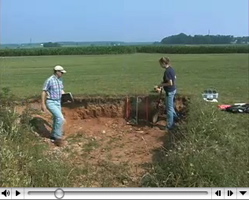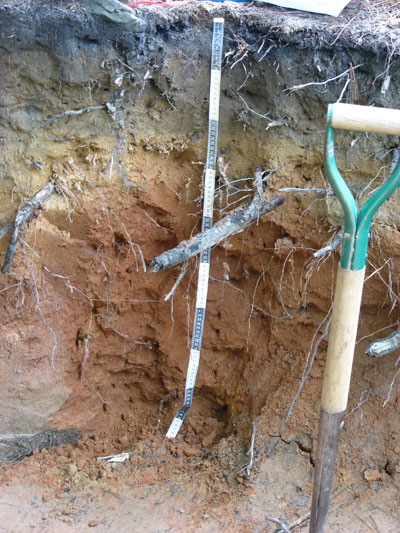Watch This!

- Part 1: Introduction to Soil Study and Soil Properties (4:20 min.). See Part 1 Transcript
- Part 2: Soil Horizons, Boundaries, & Transitions (5:30 min.). See Part 2 Transcript
- Part 3: Assessing Soil Color & Texture (6:25 min.). See Part 3 Transcript
- Part 4: Assessing Moisture & More about Horizons (7:40 min.) See Part 4 Transcript

Reading Assignment
Soils are characterized in the field in natural exposures, in dug soil pits, or in places where augers can be used to bore holes and obtain samples from the subsurface. Typically soils are described on the basis of the presence of soil horizons and the character of the boundaries between horizons, the texture of the soil based on the size of the soil constituents, the color of the soil material, the structure of the soil, the presence of organic matter and roots, and the hydraulic conductivity. Other relevant characteristics include the geomorphic (landscape) location of the soil (including slope, elevation, aspect), and soil parent material. These characteristics are in turn used to classify soils—we will discuss the classification of soils to the order level, that is twelve soil orders. Before we do, follow each of the links below to learn more about soil sampling and characterization.
You will notice that there is a substantial overlap between the first Weblink shown below and the following four Weblinks. I would like you to visit all of these Web sites but spend no more than two hours total reviewing this information.